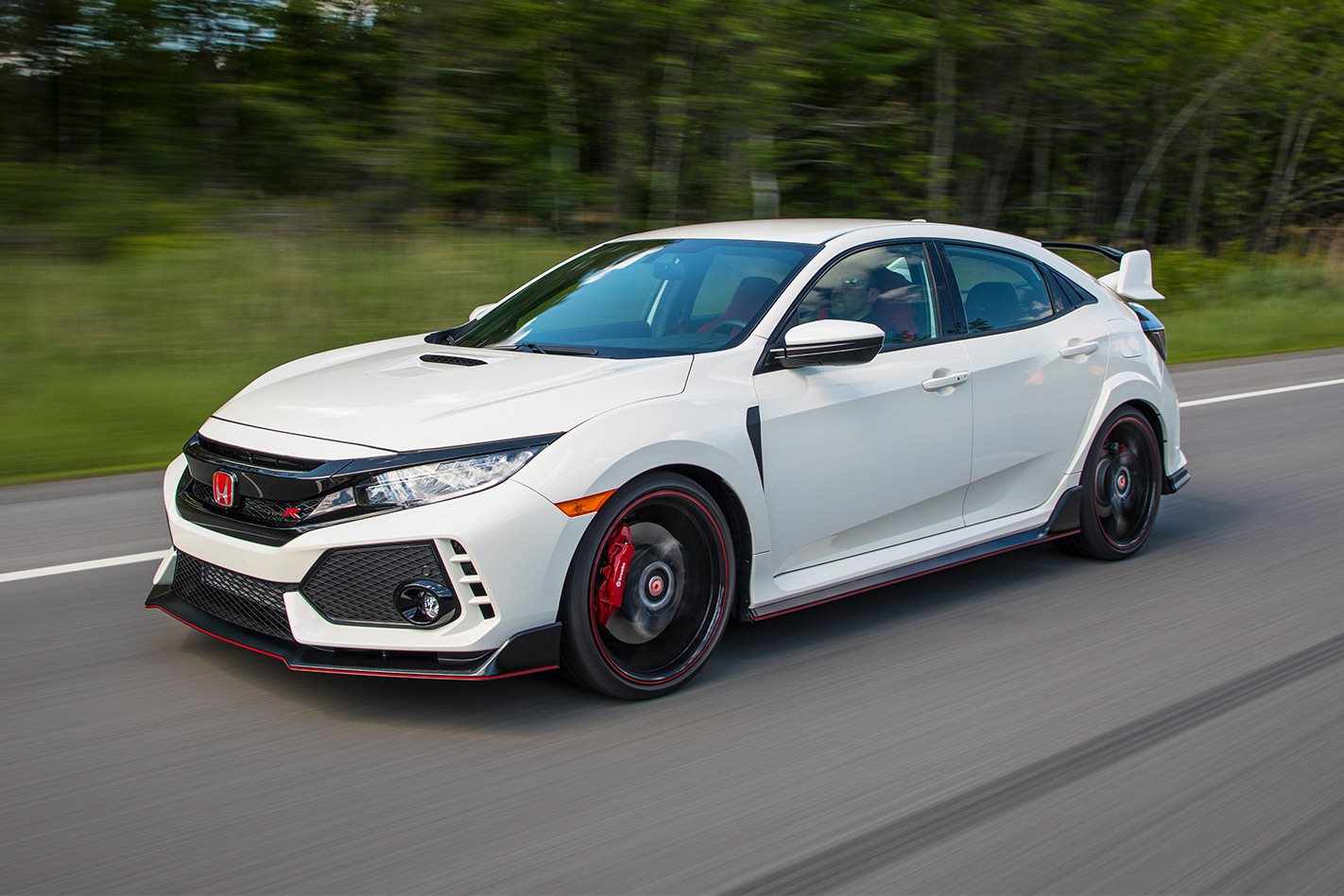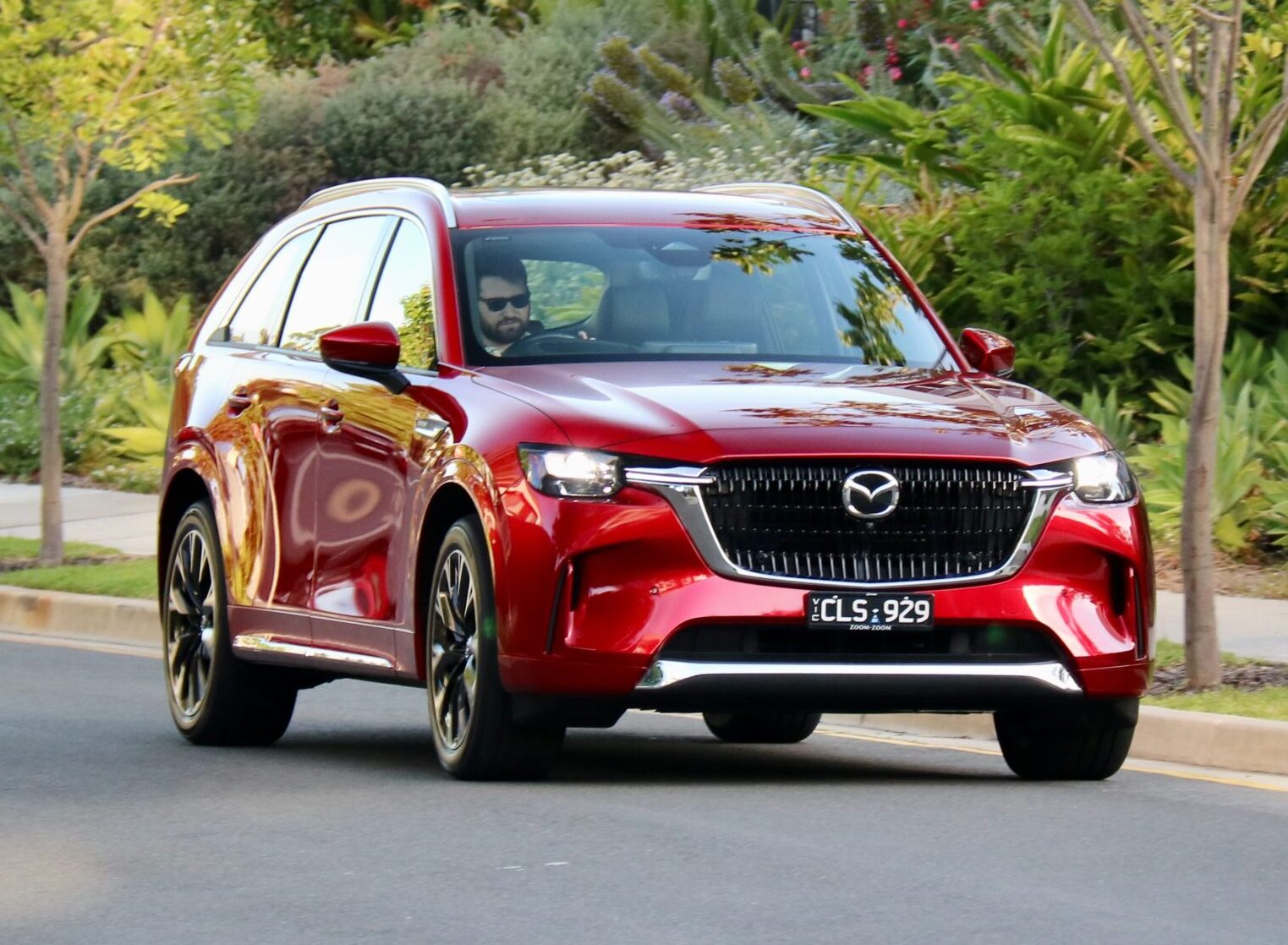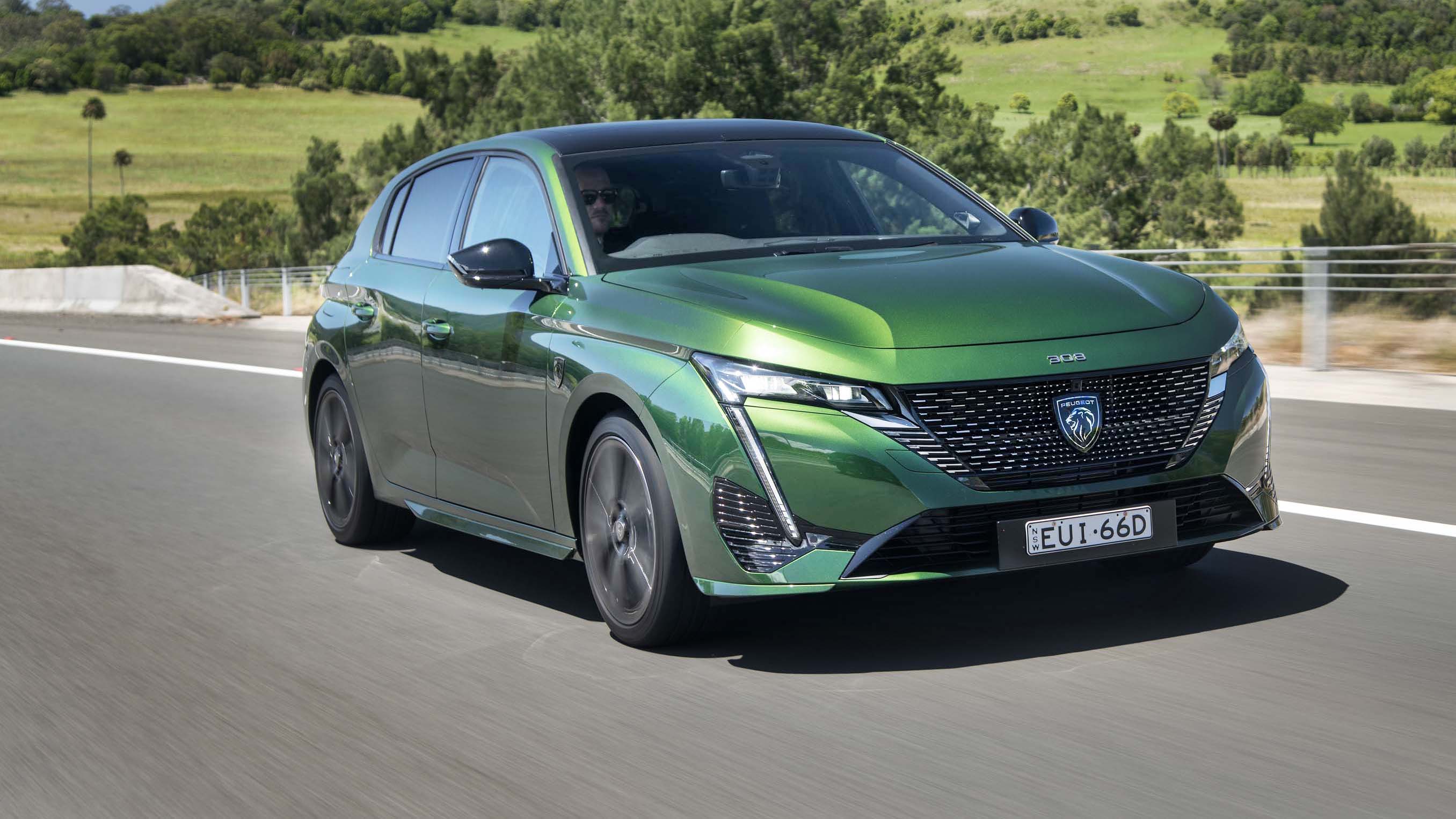The new Honda Civic Type R will arrive in Australia in October, and customers are already queuing.
WHAT IS IT? Front-drive five-door hot hatch with lively turbo 2.0-litre four and lovely six-speed manual transmission. It’s not pretty, but is quick and well equipped
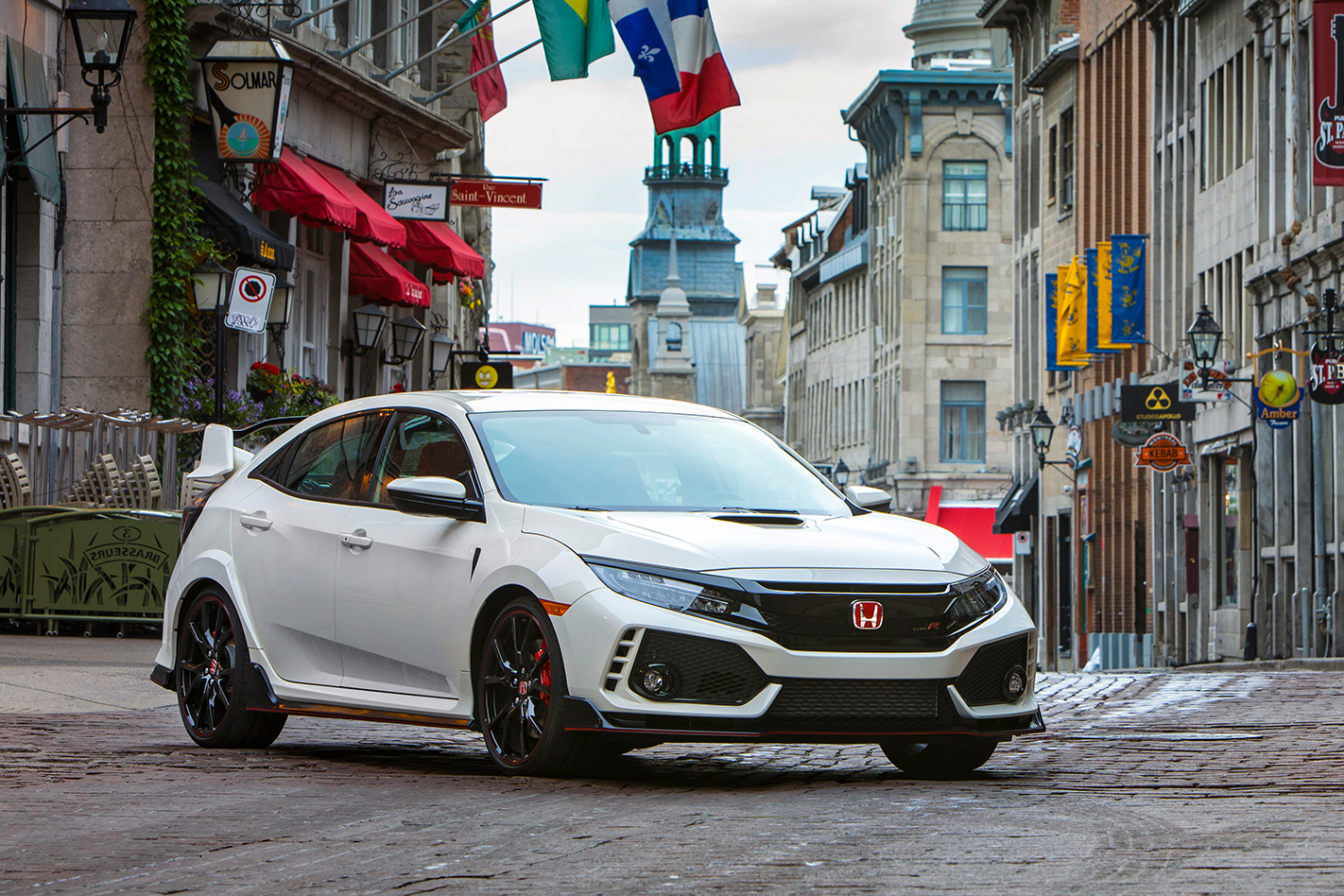
MAIN RIVALS The Ford Focus RS and VW Golf R manual may have all-wheel-drive, but they’re priced like the front-drive Honda Civic Type R. Its closest front-drive competitor is the less powerful, and less expensive, Peugeot 308 GTi 270.
THE WHEELS VERDICT There was a time, long ago, when Honda was unquestionably Japan’s most spirited and daring car maker. There are flashes of brilliance from the new Civic Type R, but not enough of them to make it a completely compelling car.
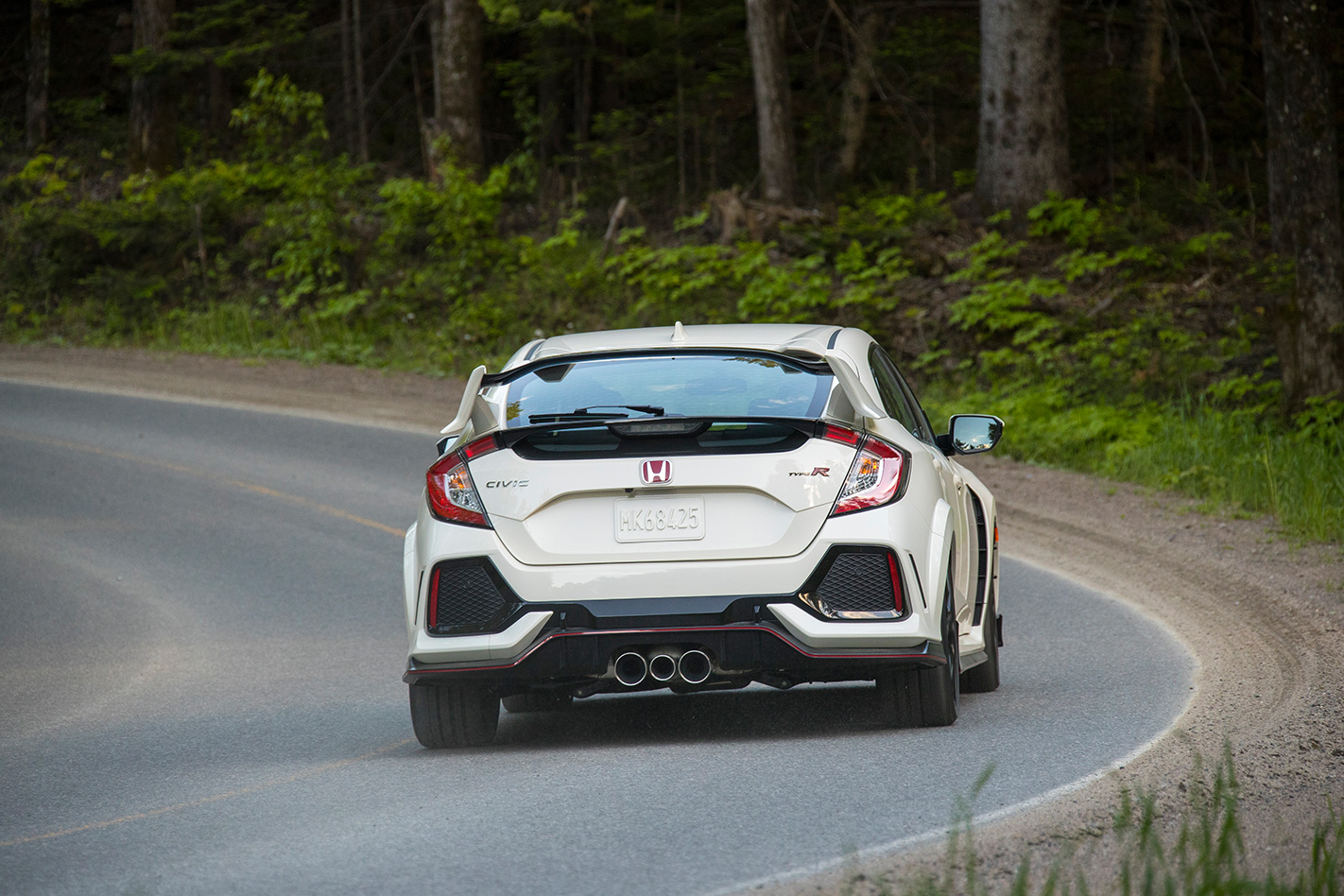
THE WHEELS REVIEW THE further you are from the Honda Civic Type R, the better it looks. It’s hard to say exactly how far is far enough. Just keep walking until the details of its designer-frenzy exterior begin to blur…
It’s hard to believe this hot hatch comes from the same company whose studios once turned out the calm and cleanly elegant shape of the 2003 Accord Euro. The new Civic Type R is instead a visually shouty assembly of aesthetic offences.
Honda’s design language may be incoherent gibberish lately, but this hasn’t entirely extinguished the brand’s appeal. More than 250 customers ordered the new Type R even before the official price – $50,990 – was announced.
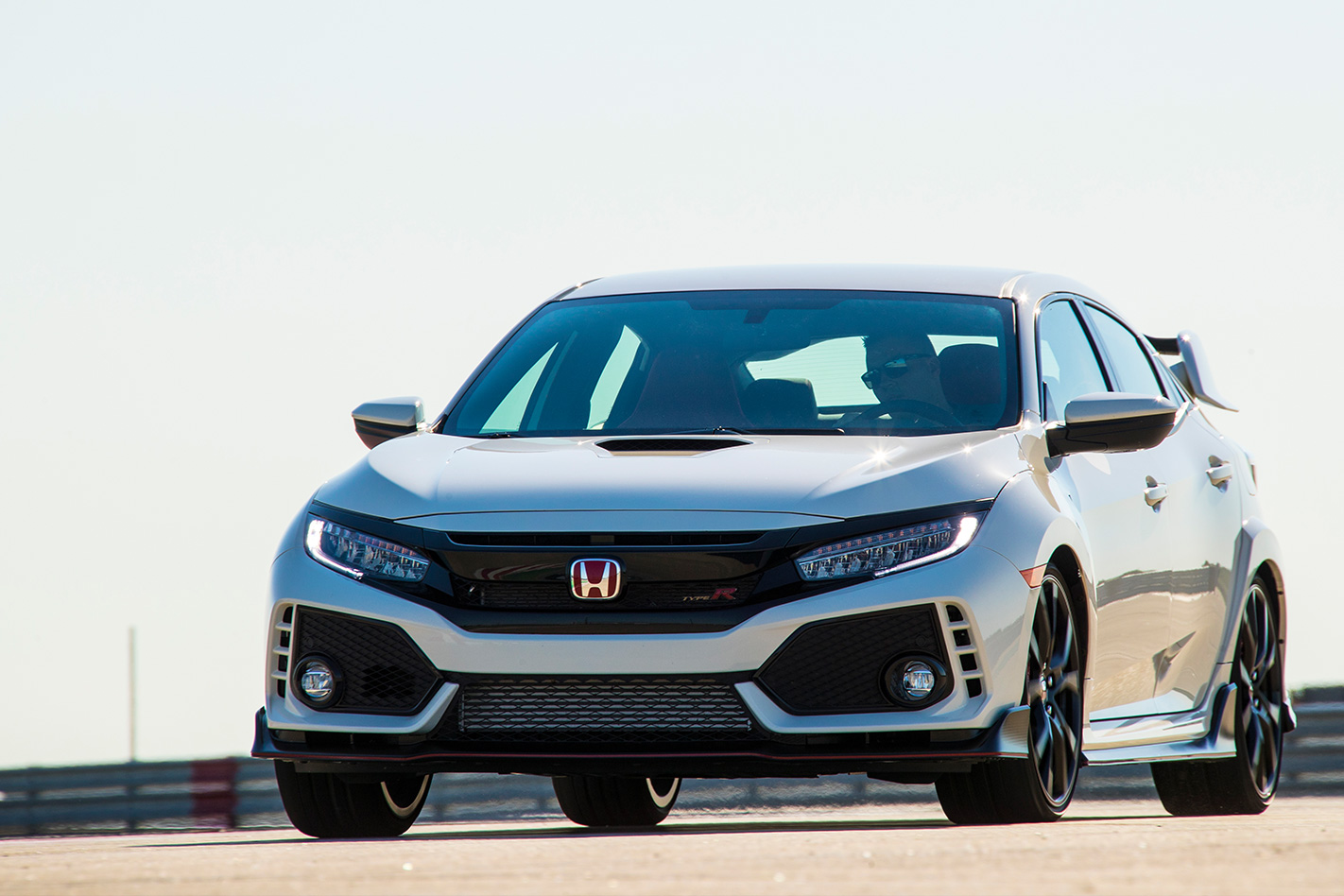
Great lap times aren’t a guarantee of all-round greatness, but maybe, just maybe, the Civic Type R engineers got it as right as the car’s designers got it wrong…
The Type R is based on the new Civic hatch that recently went on sale in Australia. But while the regular line-up is produced in Thailand, the hot version is made in England. Honda’s big Swindon factory is, in fact, the only one in the world assembling the Civic Type R. But the USA is where the Civic Type R’s engine is made. The turbocharged and direct-injected 2.0-litre four is from a Honda facility in Ohio. The Anna plant has been building the engine, designed specifically for the Type R, since 2015.
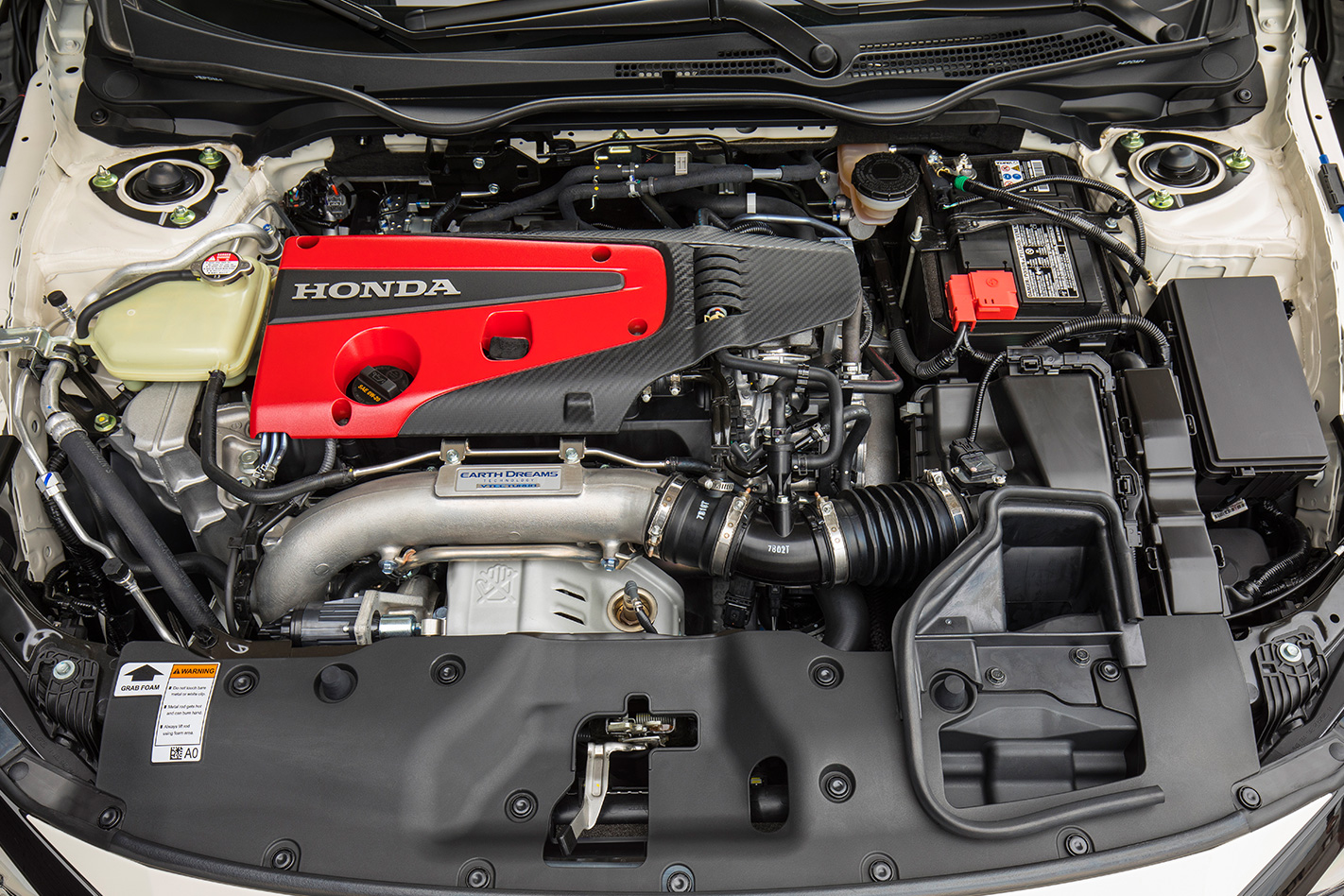
While the output of a European Civic Type R engine is 235kW, for Australia the maximum is 228kW. It’s a difference that reflects the poorer quality of fuel stipulated for Australian certification testing. This is why the Australian Civic Type R burns more fuel in the official consumption test.
Other noteworthy drivetrain changes compared to the fourth-gen Civic Type R include a seven percent shorter final-drive, which pushes the six-speed manual’s ratios a little closer together. The adoption of a fly-by-wire throttle enables a rev-matching system that blips the throttle for smooth downshifts.
The most important of the chassis upgrades over the regular Civic hatch is a new front suspension design. It delivers different geometry and more stiffness. Some stiffer Type R parts are also installed in the rear multi-link set-up.
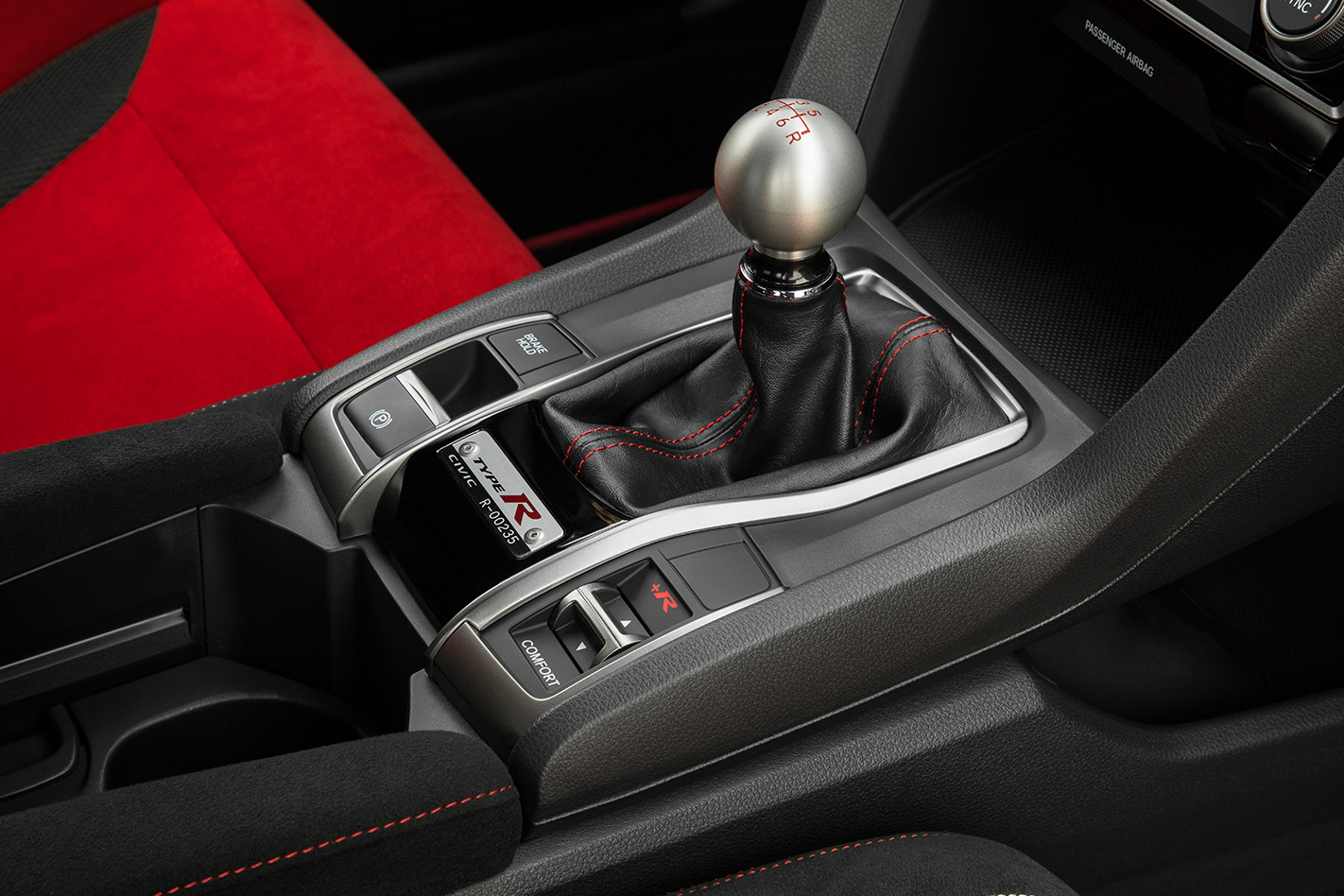
The Civic Type R rolls on 20-inch wheels wrapped in hefty 245/30ZR20 Continental SportContact 6 rubber. Big four-piston Brembo calipers bite the Honda’s hefty drilled and ventilated front discs, while the solid rear discs are larger than on the standard Civic.
And that wing isn’t just for looks. It really does generate downforce, apparently.
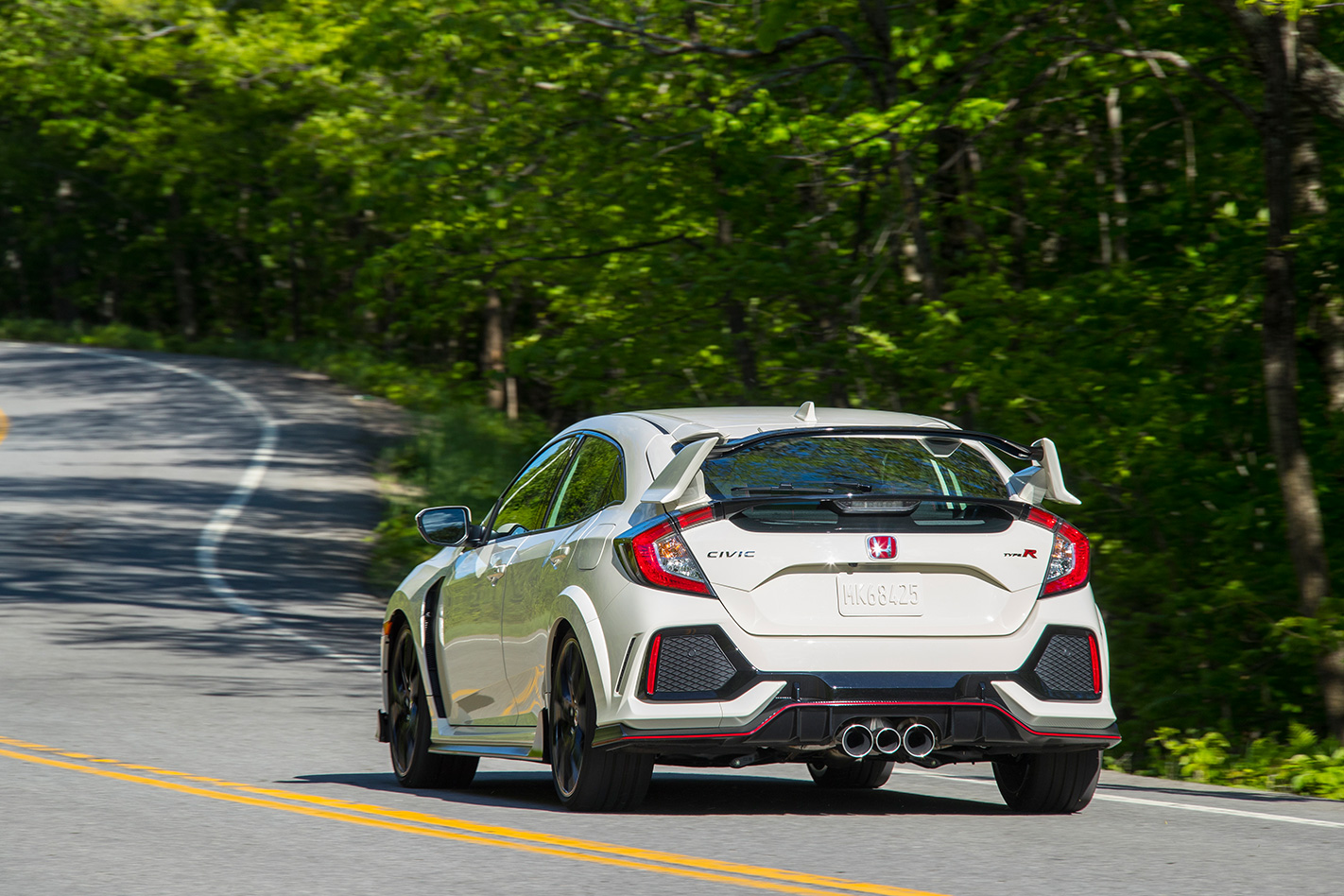
What joy it is to drive a Honda-made manual again! Quick, slick, and perfectly precise, this is a great gearbox. The metal sphere atop the stick is a treat to touch, too. It doesn’t take long to discover the Civic Type R’s new rev-matching feature is excellent, too. It can be switched off, but it’s hard to think of a reason why you’d want to.
Around the Lausitzring it’s easy to keep the Civic Type R’s engine in its juicy zone between 3000 and 7000rpm. The Lausitzring layout chosen by Honda only requires third, fourth and fifth gears. While the keening, high pitched wail of earlier generations of atmo Type R engines is absent, the turbo 2.0-litre sounds eager and, at the top of the tach, even a little angry.

Cycling through the Comfort, Sport and +R modes in succession is instructive. The softest mode is reasonably crisp, but switching to Sport adds some weight to the steering and brings an appreciable increase in throttle responsiveness. Going to +R brings more of the same. Regardless of the level of steering assist, there’s useful feedback from the quick, 2.1 turns lock-to-lock rack.

Heading back to Dresden on sometimes unrestricted autobahn, the Civic Type R reaches an even higher speed. A gap in the traffic presents an irresistible opportunity to squeeze the throttle to the stop in sixth. The Honda leaps forward and the speedometer is reading 240km/h and still rising when the time comes to back out of it. The Type R’s stability at this speed is impressive.

Hot hatches are supposed to be sensible as well as speedy. Though the new Civic hatch is much longer than the car it replaces, the interior package doesn’t feel especially spacious, especially in the rear seat.

There was a time when Type R stood for something that you could find nowhere else; high-revving naturally aspirated engines that no-one else would dare build, in cars that few could rival for quality. This ain’t the case with the new Civic Type R.
There are better to drive hot hatches with turbo four-cylinder engines than the Honda, some of them with better interiors and all of them with better exterior designs. The way the Civic Type R looks is probably the least of its problems.
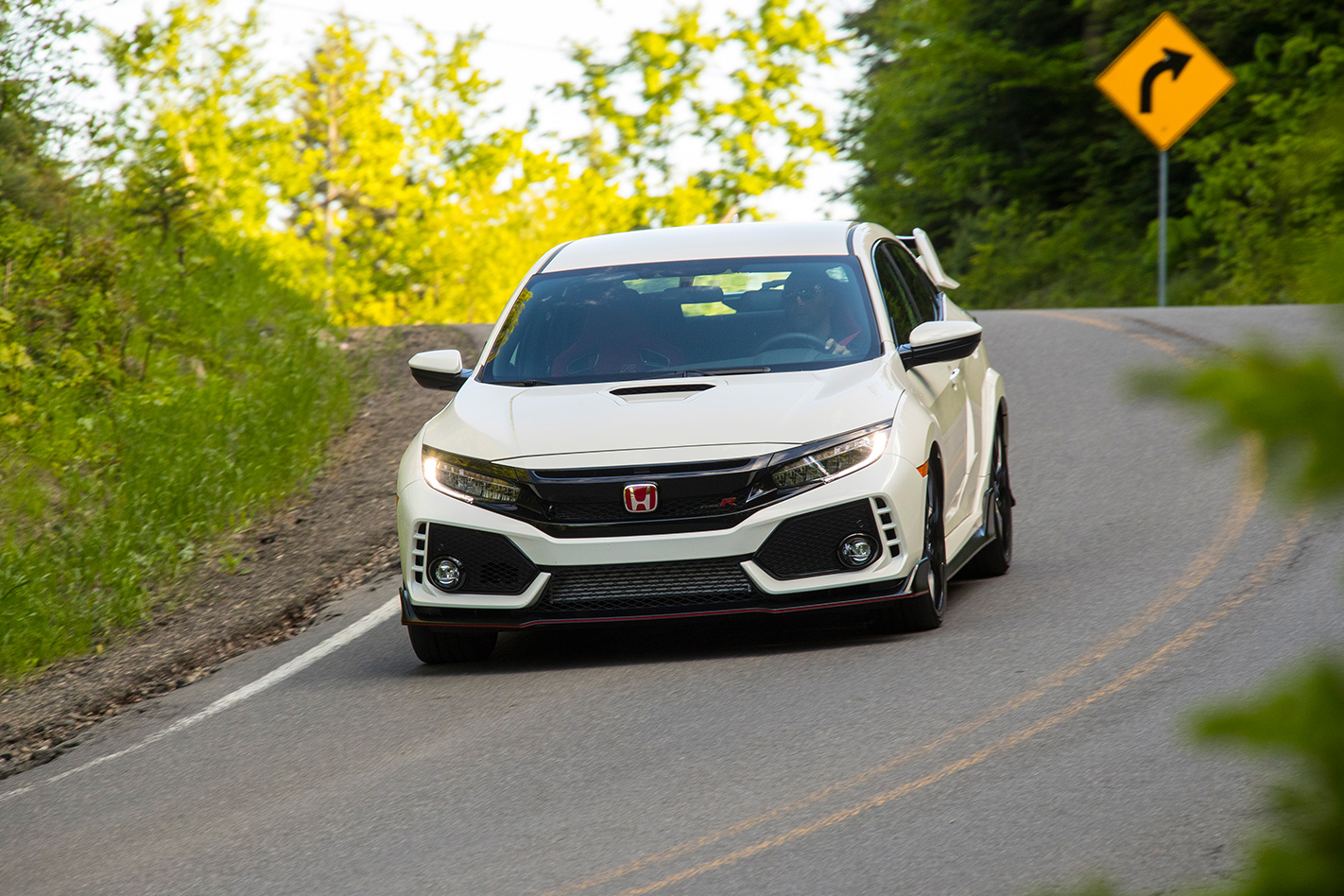
Filling in the gaps So why did the previous Civic Type R never come to Australia? Timing is the simple answer. The fourth-generation of Honda’s hot hatch went into production quite late in the life of the Civic five-door it was based on. So late, in fact, that it had a very short two-year life. Honda Australia could have imported the car, but local leadership decided they would prefer to wait for the following generation, which would be ready at almost the same time as the 10th-generation Civic hatch.
SPECS Model: Honda Civic Type R Engine: 1996cc in-line 4-cylinder, dohc, 16v, turbo Max Power: 228kW @ 6500rpm Max Torque: 400Nm @ 2500-4500rpm Transmission: 6-speed manual L/W/H: 4557/1877/1434mm Wheelbase: 2699mm Weight: 1393kg Economy: 8.8L/100km Price: $50,990 On sale: October


